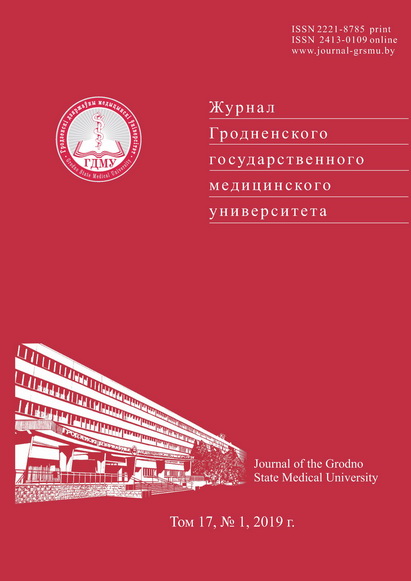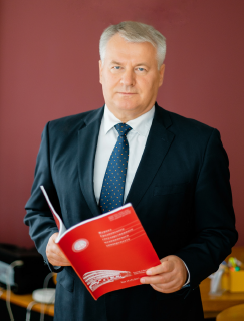МИТРАЛЬНЫЙ СТЕНОЗ В ЖИЗНИ И МУЗЫКЕ ГУСТАВА МАЛЕРА, ИЛИ ВКЛАД КОМПОЗИТОРА В РАЗВИТИЕ РЕВМАТОЛОГИИ
Аннотация
Статья посвящена верификации гипотезы композитора Л. Бернстайна и врача Ч. Амента о музификации композитором Густавом Малером в 9-й симфонии аускультативной картины своего порока сердца. При патографическом анализе было установлено, что Густав Малер имел митральный стеноз ревматическог происхождения и был хорошо знаком с его звуковыми проявлениями в виде трехчленного «ритма перепела». Симфония № 9 единодушно признана музыковедами, биографами и психоаналитиками Густава Малера прощальной, поэтому использование звуковых проявлений заболевания, ассоциирующегося в сознании композитора с близкой смертью, представляется вполне логичным творческим приемом. Музыковедческий анализ
выявил музыкальный эквивалент «ритма перепела» в нескольких фрагментах первой части 9-й симфонии Густава Малера. Сравнительный анализ выявленных фрагментов с двумя, полученными разными методами, музыкальными нотациями «ритма перепела» показал отсутствие принципиальных различий. Музыкальная нотация Густава Малера действительно отражает классическую аускультативную картину митрального стеноза.
Литература
Pai-Dhungat JV, Parikh F. Alfred de Musset’s Sign. J. Assoc. Physicians India. 2015;63(3):50.
Vaisrub S. Beethoven and Einthoven – More Than a Rhyme. JAMA. 1980;244(17):1963-1971. doi:10.1001/jama.1980.03310170061033.
Van Roessel P, Shafer A. Music, Medicine, and the Art of Listening. Journal for Learning through the Arts. 2006;2(1):14-27.
List K. Mahler: Father of Modern Music. Commentary. 1950;10:42-49.
Lebrecht N. Why Mahler? How one man and ten symphonies changed the world. London: Faber & Faber; 2010. 362 p.
Karenberg A. Retrospective diagnosis: use and abuse in medical historiography. Prague Med. Rep. 2009;110(2):140-145.
Goldberger ZD, Whiting SM, Howell JD. The Heartfelt Music of Ludwig van Beethoven. Perspectives in biology and medicine. 2014;57(2):285-294. doi: 10.1353/pbm.2014.0013.
Levy D. Gustav Mahler and Emanuel Libman: bacterial endocarditis in 1911. Br. Med. J. 1986;293(6562):1628-1631. doi: 10.1136/bmj.293.6562.1628.
Libman E. A study of the endocardial lesions of subacute bacterial endocarditis, with particular reference to healing or healed lesions: with clinical notqs. Am. J. Med. Sci. 1912;144:313-327.
Bernstein L. The unanswered question: Six talks at Harvard. Kultur International Cambridge: Harvard University Press; 1976. 440 р.
Amenta C. The opening of Mahler’s Ninth Symphony and the Bernstein “heart-beat” hypothesis. Naturlaut. 2005;4(1):17-19.
Obrazcov VP. K fizicheskomu issledovaniju zheludochno-kishechnogo kanala i serdca [To physical examination of the gastrointestinal canal and heart]. Kiev : Tipografija G. M. Veseloj; 1912. 265 р. (Russian).
Laennec RTH. Traite de L’Auscultation. Paris: J.S. Chaude, Libraire-editeur; 1837. 792 p.
Segall HN. Evolution of graphic symbols for cardiovascular sounds and murmurs. British Heart Journal. 1962;24(1):1-10. doi: 10.1136/hrt.24.1.1.
Cabot RC, Dodge HF. Frequency characteristics of heart and lung sounds. JAMA. 1925;84(24):1793-1795. doi:10.1001/jama.1925.02660500001001.
Mckusick VA, Murray GE, Peeler RG, Webb GN. Musical murmurs. Bulletin of the Johns Hopkins Hospital. 1955;97(2):136-176.
Khorasani ES, Doraisamy S, Azman A. Automatic heart diseases detection techniques using musical approaches. Journal of Applied Sciences. 2011;11(17):3161-3168. doi: 10.3923/jas.2011.3161.3168.
March SK. Proctor Harvey: A master clinician-teacher’s influence on the history of cardiovascular medicine. Texas Heart Institute Journal. 2002;29(3):182-192.
Reik T. The Haunting Melody: Psychoanalytic Experiences in Life and Music. New York: Farrar, Straus and Young; 1953. 380 p.
Mooney WE. Gustav Mahler: a note on life and death in music. The Psychoanalytic Quarterly. 1968;37(1):80-102. doi: 10.1080/21674086.1968.11926453.
Cardoso F, Lees AJ. Did gustav mahler have Sydenham’s chorea? Movement disorders. 2006;21(3):289-292. doi: 10.1002/mds.20788.
Haan J, Ferrari MD. Mahler’s migraine. Cephalalgia. 2000;20(4):254-254. doi: 10.1046/j.1468-2982. 2000.00021.x.
Mahler, А. Gustav Mahler: memories and letters. New York: The Viking Press; 1946. 312 p.
Christy NP, Christy BM, Wood BG. Gustav Mahler and his illnesses. Trans. Am. Clin. Climatol. Assoc. 1971;82:200-217.
Kravitt EF. Mahler, Victim of the ‘New’ Anti-Semitism. Journal of the Royal Musical Association. 2002;127(1):72-94. doi: 10.1093/jrma/127.1.72.
Barsova I, editor. Gustav Mahler. Memories. Letters. 2nd ed. Osherov S, translated. Moskva: Music; 1968. p. 326.
La Grange H.L. Gustav Mahler. Oxford: Oxford University Press; 1995. p. 451-452.
Collins DT. Gustav Mahler’s summer of 1910. Bulletin of the Menninger Clinic. 1982;46(3)255-262.
Still R. Gustav Mahler and psychoanalysis. American Imago. 1960;17(3):217-240.
Feder S. Gustav Mahler: A life in crisis. New Haven: Yale University Press; 2004. 353 p.
Feder S. Gustav Mahler: The music of fratricide. International Review of Psycho-Analysis. 1981;8(3):257-
Feder S. Gustav Mahler, dying. International Review of Psycho-Analysis. 1978;5(2):125-148.
Kuehn JL. Encounter at Leyden: Gustav Mahler consults Sigmund Freud. Psychoanalytic review. 1965;52(4):5-14.
Starcevic V. Gustav Mahler as Freud’s patient: a note on possible obstacles to communication and understanding. Australasian Psychiatry. 2013;21(3):271-275. doi: 10.1177/1039856213480412.
Mahler G, McClatchie S. The Mahler Family Letters. Oxford: Oxford University Press; 2006. 418 р.
Laennec RTH. Traité de l‘auscultation médiate, et des maladies des poumons et du coeur. Vol. 1. Paris: J.S. Chaudé Libraire-Editeur; 1826. 792 p.
Corrigan DJ. On the mechanism of bruit de soufflé. Dublin Journal of Medical Science. 1836;10(2):173-197.
Flint A. A practical treatise on the diagnosis, pathology, and treatment of diseases of the heart. Philadelphia: Blanchard and Lea; 1859. 526 р.
Mouthon JM. Pierre Carl Edouard Potain (1825-1901). Angéiologie. 2013;64(3):71-73.
Flint A. Reduplication of both sounds of the heart. Case and remarks. The Western Journal of Medicine and Surgery. 1855;3(4):245-252.
Flint A. The mitral cardiac murmurs. The American Journal of the Medical Sciences. 1886;91(181):27-32.
Einthoven W. The string galvanometer and the human electrocardiogram. KNAW Proceedings. 1903;6:107-115.
Barker LF, Hirschfelder AD, Bond GS. The electrocardiogram in clinical diagnosis. JAMA. 1910;55(16):1350-1353. doi:10.1001/jama.1910.04330160018006.
James WB, Williams HB. The electrocardiogram in clinical medicine. The American Journal of the Medical Sciences. 1910;140(5):644-652.
Einthoven W. The different forms of the human electrocardiogram and their signification. The Lancet. 1912;179(4622):853-861. doi: 10.1016/S0140-6736(00)50560-1.
Sprague HB. History and present status of phonocardiography. IRE Transactions on Medical Electronics. 1957;PGME-9:2-3. doi: 10.1109/IRETME. 1957.5008615.
Bull L. On the simultaneous record of the phono and electrocardiogram. Quarterly Journal of Experimental Physiology. 1911;4(3):289-292. doi: 10.1113/expphysiol. 1911.sp000101.
Barsova IA. Simfonii Gustava Malera [Gustav Mahler’s Symphonies]. Moskva : Sovetskij kompozitor; 1975. 493 p. (Russian).
Field MJ. Music of the heart. The Lancet. 2010;376(9758):2074. doi: 10.1016/S0140-6736(10)62295-7.






























